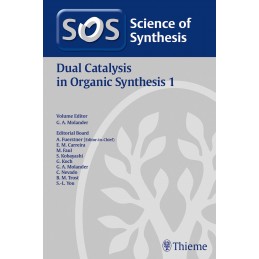- Reduced price

Order to parcel locker

easy pay


 Delivery policy
Delivery policy
Choose Paczkomat Inpost, Orlen Paczka, DHL, DPD or Poczta Polska. Click for more details
 Security policy
Security policy
Pay with a quick bank transfer, payment card or cash on delivery. Click for more details
 Return policy
Return policy
If you are a consumer, you can return the goods within 14 days. Click for more details
The field of dual catalysis has developed rapidly over the last decade, and these volumes define its impact on organic synthesis. The most important, basic concepts of synergistic, dual catalytic cycles are introduced, providing newcomers to the field with reliable information on this new approach to facilitating the synthesis of organic molecules. Background information and reliable procedures for challenging transformations in synthesis are presented, applying the concept of cooperative dual catalysis as a means of increasing molecular complexity in the most efficient manner. The most useful, practical, and reliable methods for dual catalysis combining metal catalysts, organocatalysts, photocatalysts, and biocatalysts are presented.
Data sheet
1.1 Metal/Metal Dual Catalysis
1.1.1 General Principles of Metal/Metal Dual Catalysis
1.1.2 Palladium/Copper and Palladium/Nickel Dual Catalysis
1.1.3 Rhodium/Palladium Dual Catalysis
1.1.4 Iridium/Zinc and Iridium/Copper Dual Catalysis
1.1.5 Gold/Iron Dual Catalysis
1.1.6 Gold Dual Catalysis with Palladium, Nickel, or Rhodium
1.1.7 Gold/Gold Dual Catalysis
1.2 Transition-Metal/Photocatalyst Dual Catalysis
1.2.1 General Principles of Transition-Metal/Photocatalyst Dual Catalysis
1.2.2 Nickel/Photocatalyst Dual Catalysis
1.2.3 Palladium/Photocatalyst Dual Catalysis
1.2.4 Gold/Photocatalysis Dual Catalysis
